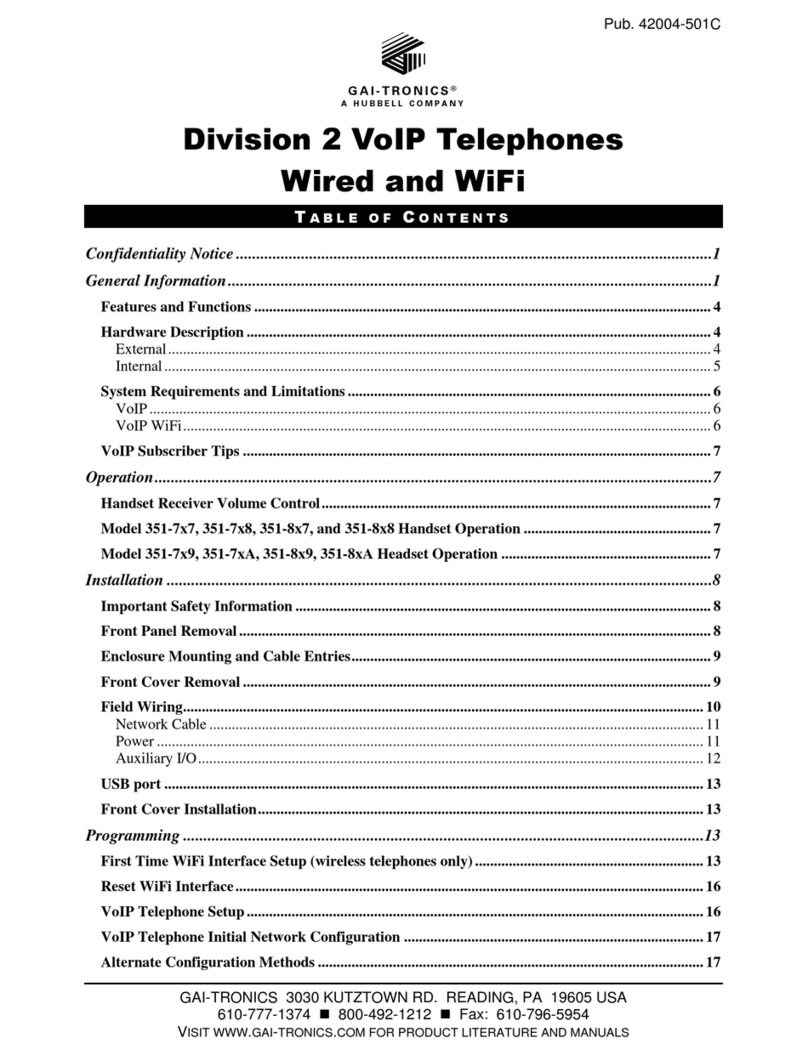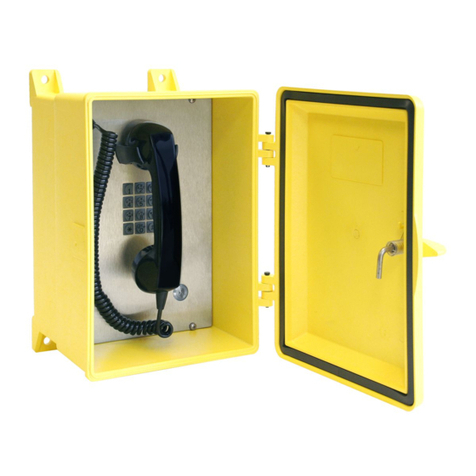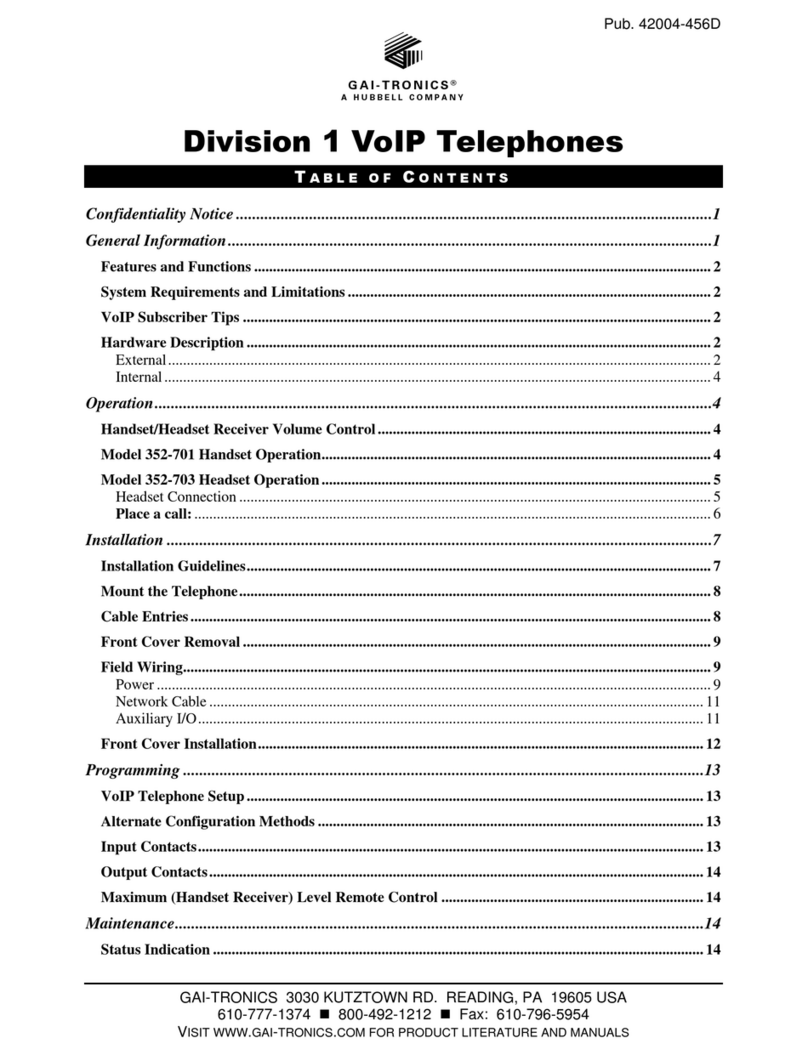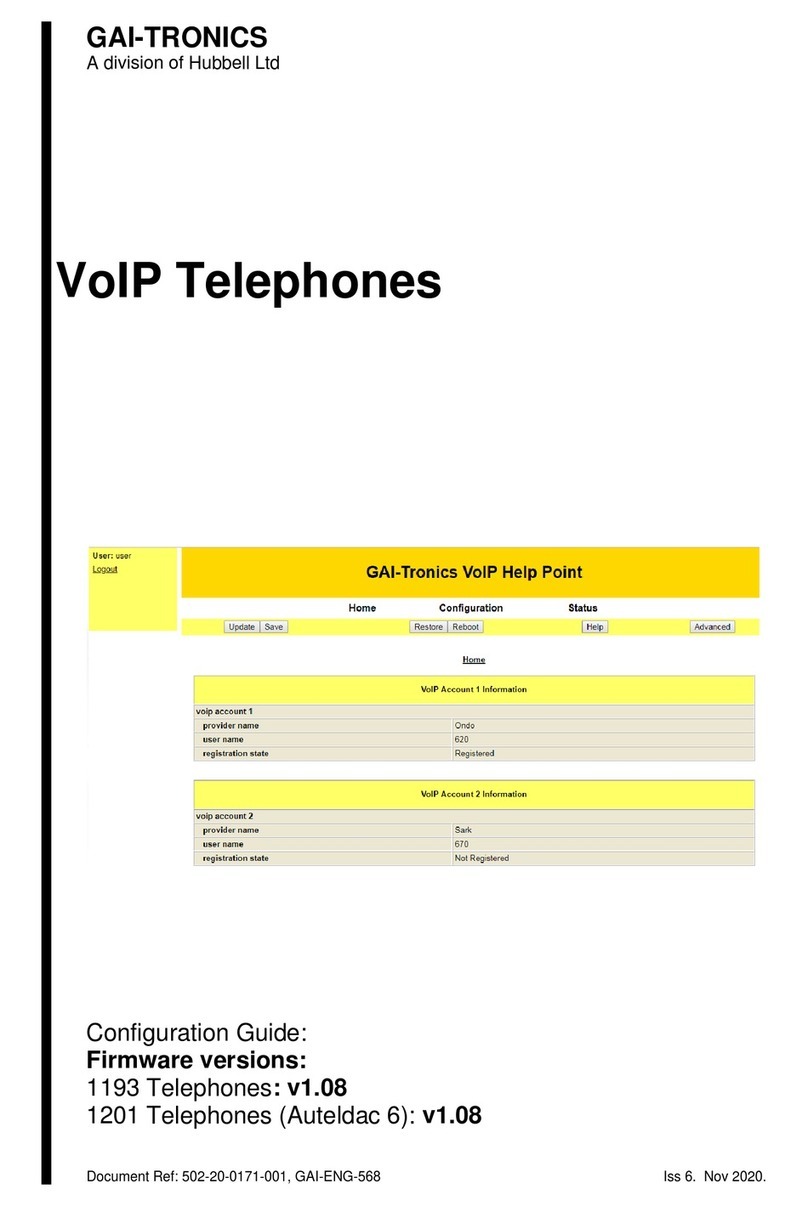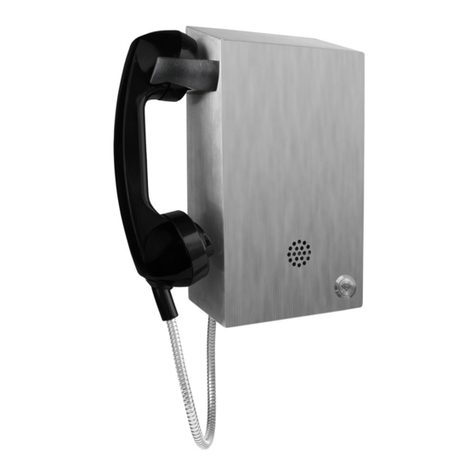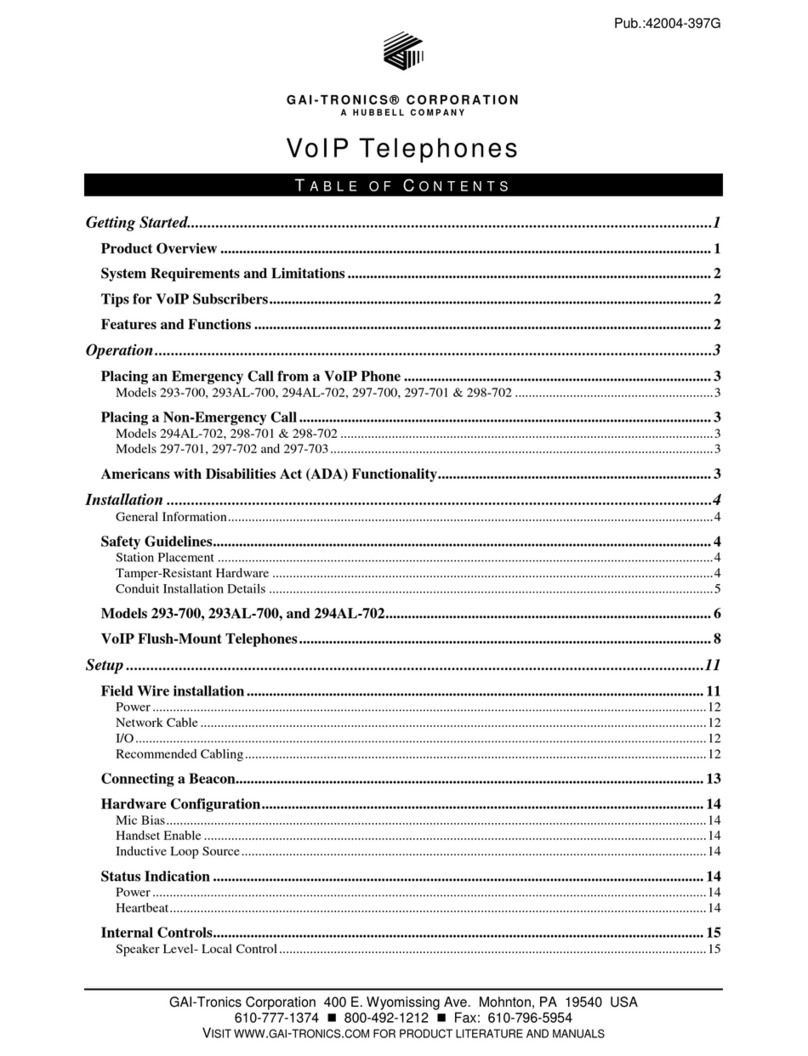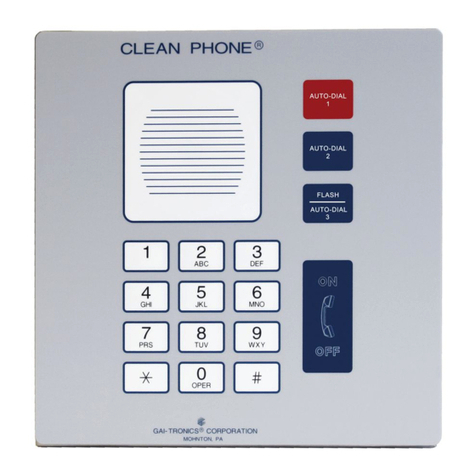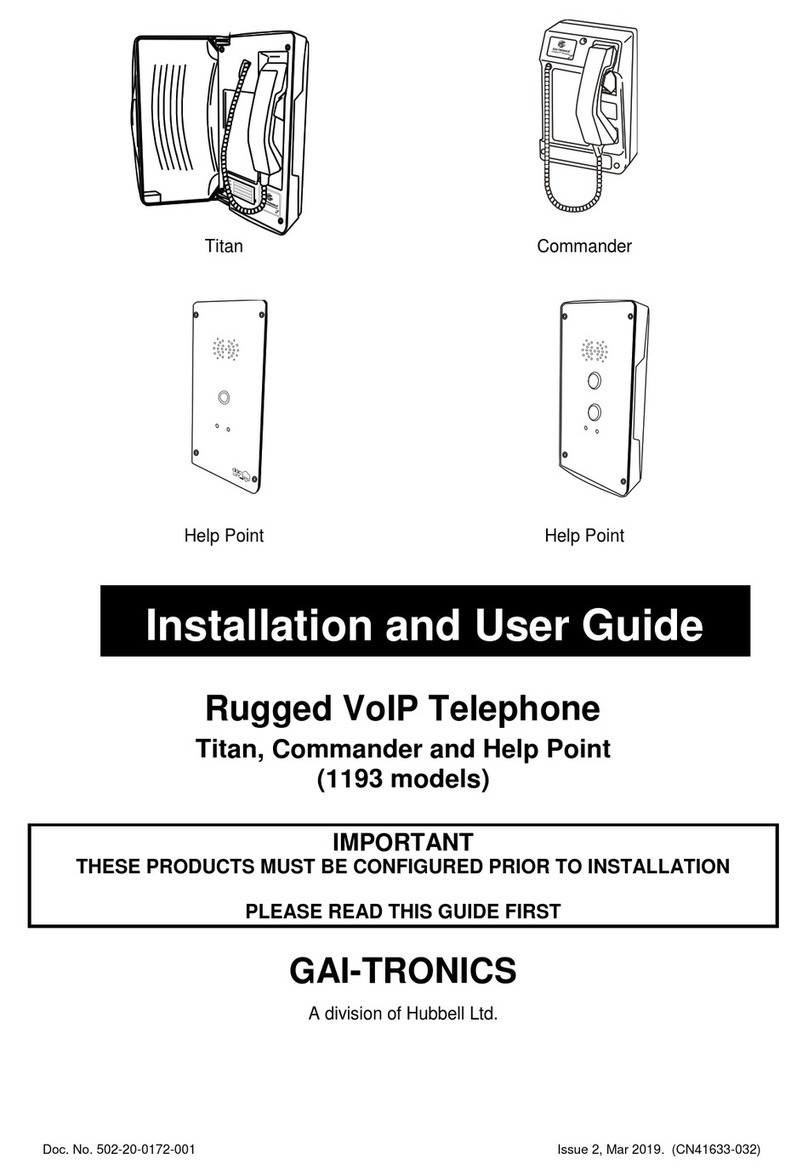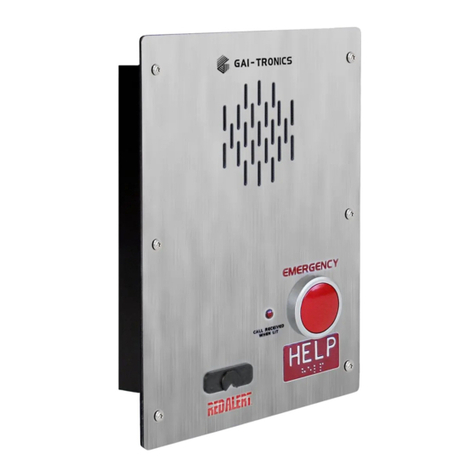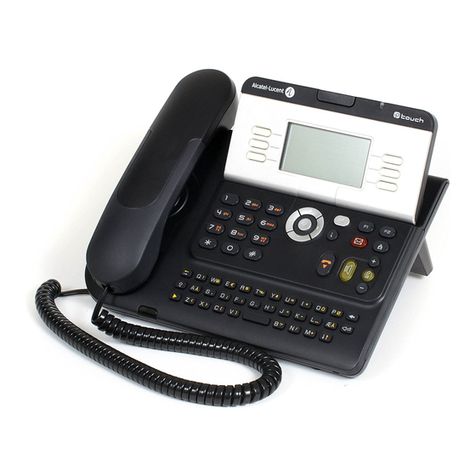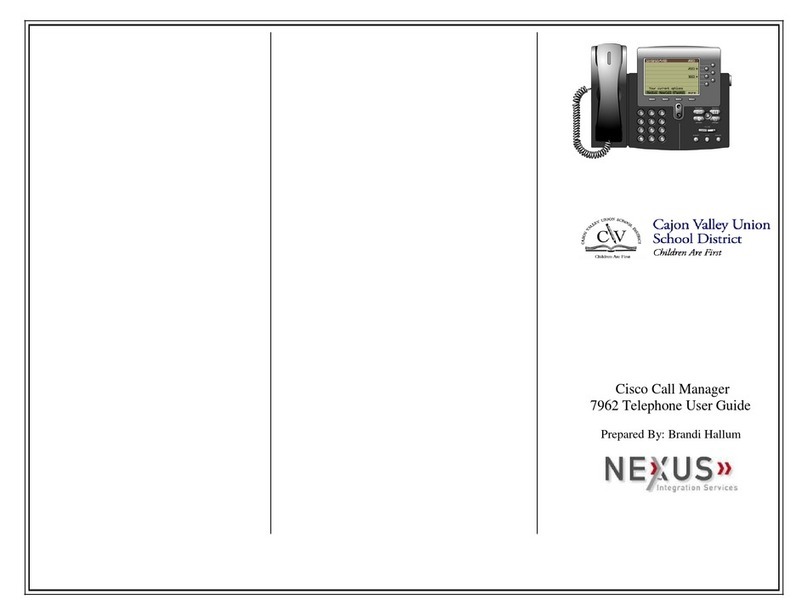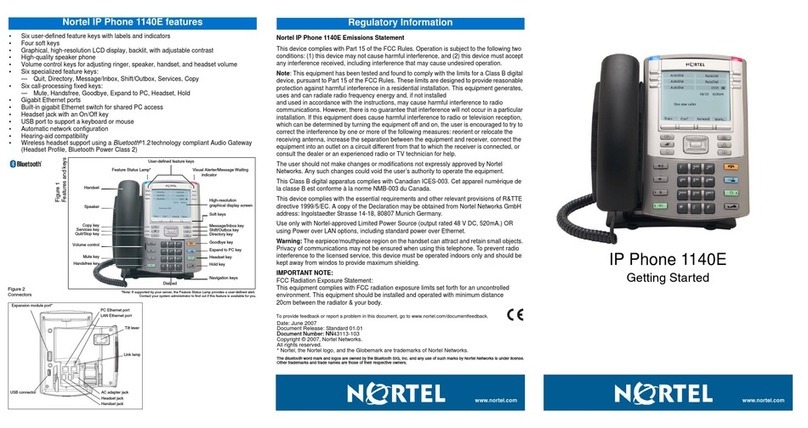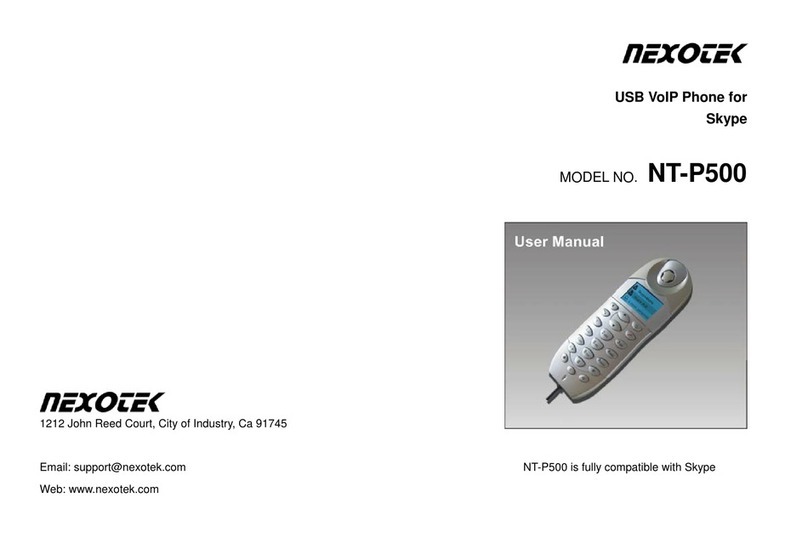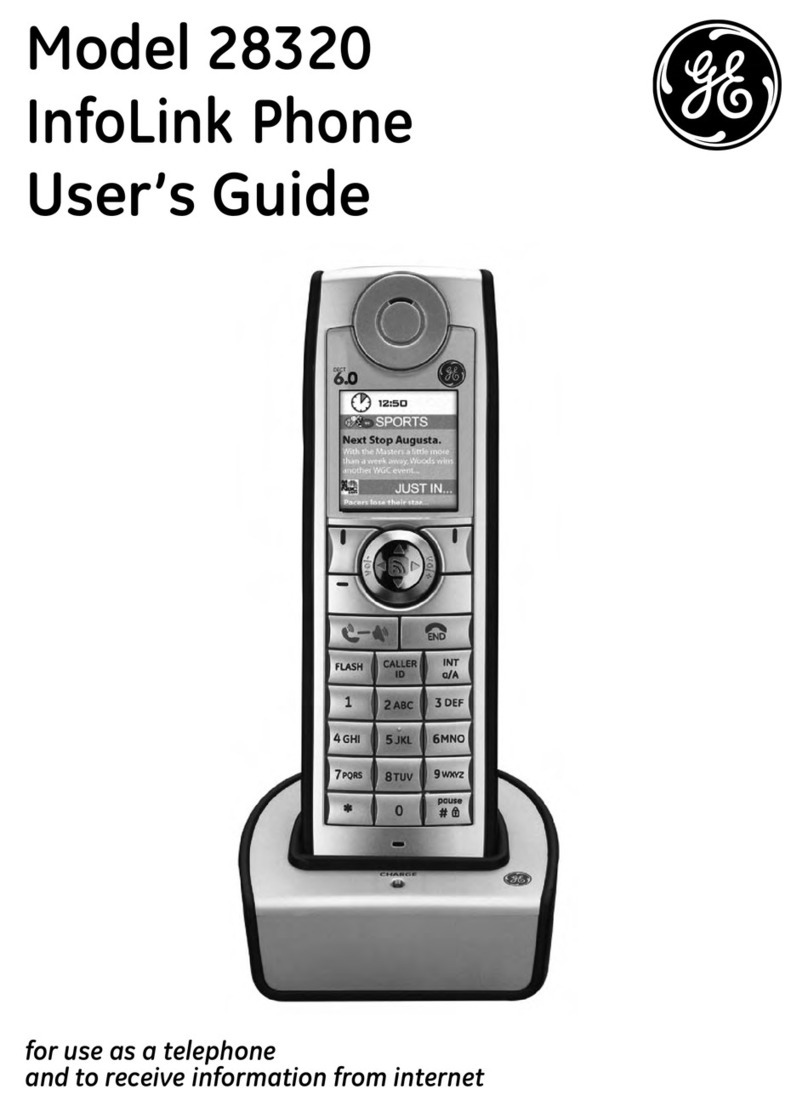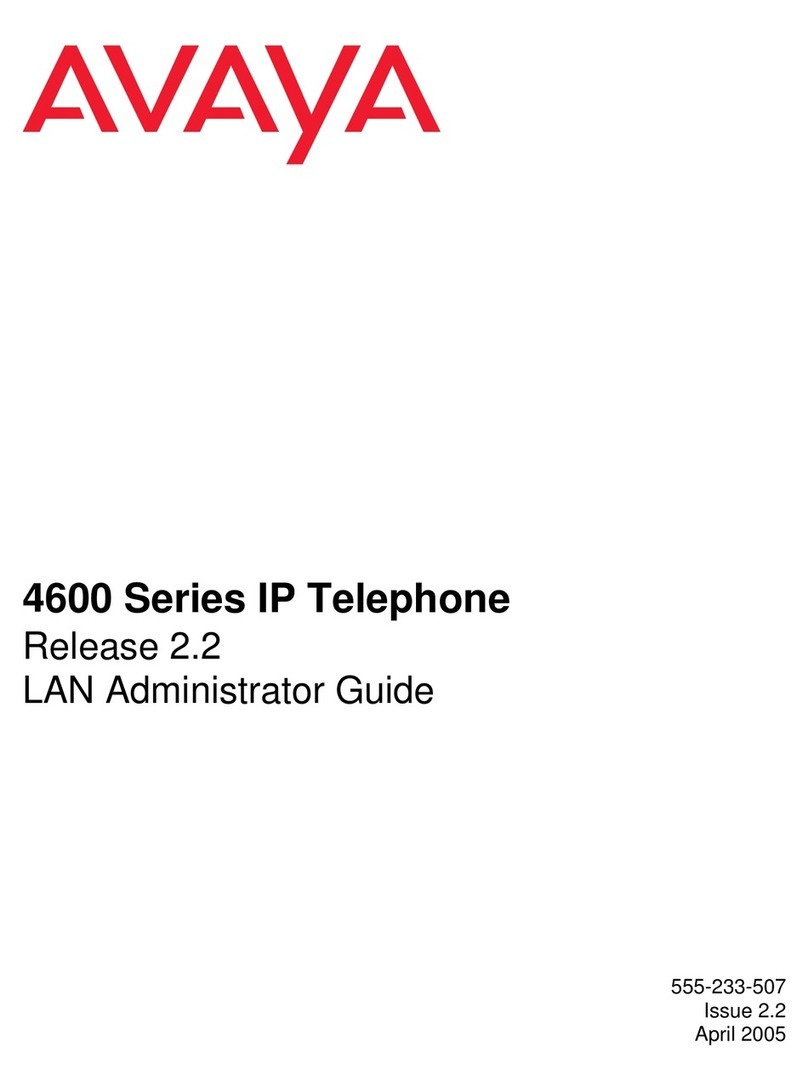5.2 Pre- installation
The Auteldac 6 telephone is connected by hard-wiring - (unlike a plug
and socket on internal telephones). Because of this, installation must
be carried out by trained, competant personnel. Contact GAI-Tronics if
installation service is required.
The telephone is supplied suitable for vertical mounting only. Before
installing the unit, please take note of the following:
•Glands. Glands are not supplied. All glands and cables must meet
‘Increased Safety’ (‘e’ type) requirements. Only ‘e’ type glands and
suitable cables should be used and must be fitted correctly.
Glands must meet IP66 minimum and be certified Ex eb tb.
Glands must be suitable for -40°C to +70°C
•Earth connection. The unit must be connected to an
equipotential bonding system for the whole area in which the
intrinsically safe equipment is being used. See section 5.4.3 for
details.
•Cable entries - Auteldac 6 has two M20 cable entry gland
positions. Before installing, give consideration to the options
available to ensure that the required connections can be made
using the available glands.
If a high voltage is connected to the relay contacts (for example to
activate a mains-powered beacon) then that cable must be
segregated from all other cables and routed through its own gland.
Upon installation care should be taken to ensure that incoming
cables are cleanly routed with a view to maintaining segregation
between hazardous voltage cabling and the telephone's internal
wiring (i.e. handset, hookswitch, ringer and headset if fitted).
ALL POSSIBLE MEASURES MUST BE TAKEN TO ENSURE
WATER, FLUID OR DUST DOES NOT CONTAMINATE THE
INTERNAL COMPONENTS OF THE TELEPHONE WHILST
UNPACKING, PREPARING AND INSTALLING IT IN INCLEMENT
WEATHER CONDITIONS OR BY NEGLIGENCE.
FAILURE TO TAKE THIS PRECAUTION WILL INVALIDATE YOUR
WARRANTY AND CERTIFICATION
The telephone body must NOT be opened, nor glands removed or
cables disconnected unless all supplies to the telephone, including
network cables, power cables and external devices have been isolated
outside the hazardous area. Terminals for incoming cables are ‘e’ type
and must be carefully connected so as to make an ‘e’ type termination.
